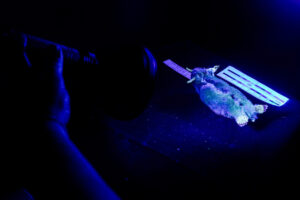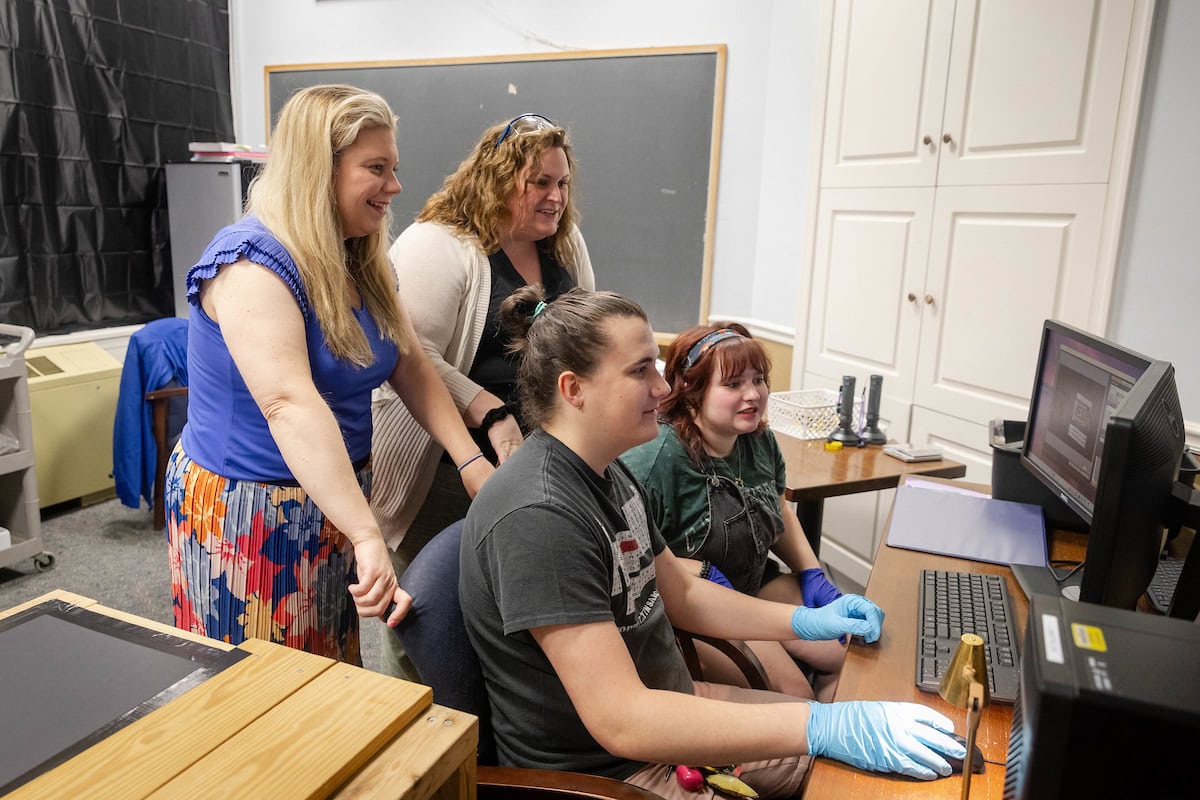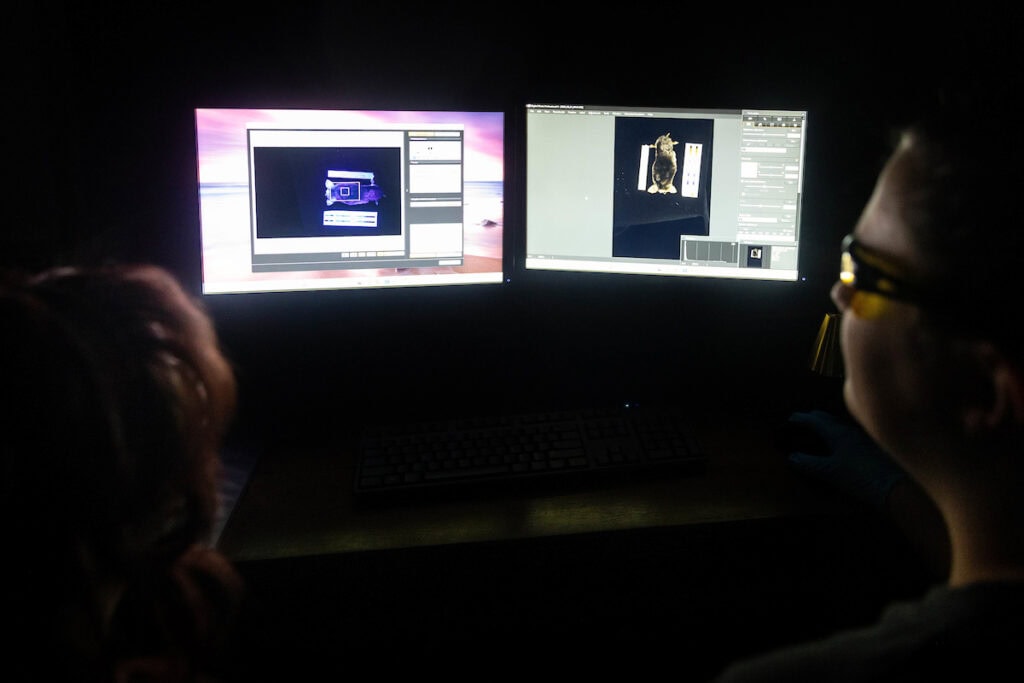But does it glow? Students investigating biofluorescence in mammals
Randolph’s Summer Research Program is a competitive, paid program that pairs students with faculty members to conduct research in their areas of interest. This story is part of an ongoing series featuring their work on campus this summer.
 It all started with squirrels.
It all started with squirrels.
Specifically, a species of flying squirrels that glows pink under UV light.
When biology professor Amanda Rumore first read about this phenomenon, called biofluorescence, appearing in mammals, she knew it could work as a Summer Research Program project that utilizes Randolph’s Natural History Collection.
Biofluorescence occurs when light is absorbed by a molecule found within the skin or fur of an animal and then emitted as light of a different frequency or color, usually green, orange, blue, or red.
“This is such a new field because it was only in 2018 that these pink squirrels were first viewed in the wild,” she said. “Since then, natural history collections around the world have started doing what we’re doing, which is shooting UV light at specimens and seeing what lights up.
“For a college of our size to have the variety of specimens we have is incredible,” she added. “We will be able to add to that knowledge base.”
Rumore has assembled an all-star team to work on it this summer: Biology Lab Technician Sara Harper-Roche, Collections Manager Emilie Bryant ’22, biology major Kadence Bradberry ’26, and museum and heritage studies major Talon Ferguson ’27.
“This is a true interdisciplinary project,” Rumore said. “We’re working with museum specimens and cataloguing them, while also learning zoology and identification.”
Randolph’s Natural History Collection dates back to at least 1895 and includes hundreds of zoological specimens, including birds, mammals, fish, reptiles, insects, and more.
The specimens they’ve been cataloguing this summer range from mice and rabbits to bats and even a platypus estimated to be about 120 years old. They analyze each one for evidence of biofluorescence by photographing it, and if the glow is present, recording its color and determining the source.
“There are a lot of animals and organisms that fluoresce,” Bradberry said. “We see it in jellyfish, coral, and lots of insects. But we don’t know why mammals do it. For this project, we’re focusing on the physical aspect of it: Who glows and who doesn’t? And is it coming from the animal’s skin or its fur?”
Both she and Ferguson are enjoying the hands-on aspect of the work.
“I’ve been in quite a few museum classes, but haven’t had that much experience with actual collections,” said Ferguson, who took Intro to Biology with Rumore. “This is the first time I’ve actually done any cataloguing, and I really like learning about these animals and recording everything in a standardized manner. It’s perfect for people like me, who like doing one thing, one way, over and over again.”
It’s also helping jumpstart the work that Bryant and Harper-Roche have been planning to do on the Collection when the Martin Science Building renovation is complete.
“Our goal is to organize the collection anew in the new building, making sure the collection is accessible and easy to use, so students can regularly go in there and practice,” Bryant said. “This project starts us off on a good foot.”
Tags: biology, museum and heritage studies, natural history collection, Randolph College Natural History and Archaeology Collections, summer research, summer research 2025



